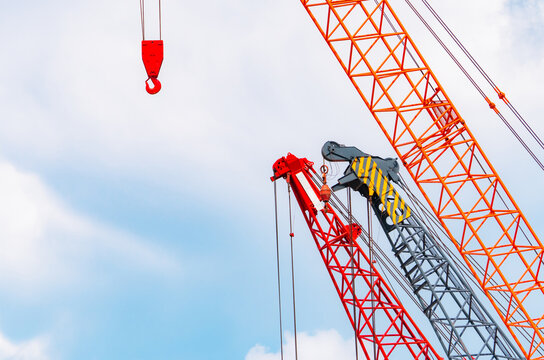
Bobcat Contracting, a crane rental company synonymous with excellence in crane equipment rental, repair and maintenance services, has been the preferred choice of businesses in Texas and Oklahoma for over three decades. We service a wide variety of cranes, ensuring your equipment is safe, efficient, and in perfect working order.
MOBILE FIELD REPAIR SERVICE
We understand that transporting a crane to our facility for repair is not always feasible. To resolve this issue, we provide a mobile field repair service, sending our skilled technicians to your location. Equipped with cutting-edge tools and a wealth of knowledge, our field engineers can execute most repairs on-site, minimizing downtime and ensuring your crane is back in action as quickly as possible.
RELINING SERVICES
Bobcat Contracting offers comprehensive relining services to extend the lifespan of your crane. Our crane rental company is proficient in relining various crane parts, ensuring they perform at their best and providing you with value for money. We only use high-quality materials for our relining services, ensuring durability and optimum performance.
PARTS AND SERVICE IN ONE PLACE
In addition to repairs and maintenance, we offer a wide range of high-quality parts from the world’s leading crane manufacturers. You won’t have to source parts from different suppliers; you can get everything you need from Bobcat Contracting. We are your one-stop crane rental company for crane repair, maintenance, and parts.
MACHINE REBUILDS
Our team is highly skilled at rebuilding cranes. Whether due to age or extensive damage, we can completely rebuild your crane to like-new condition. This cost-effective solution often makes more sense than replacing an entire machine, especially for older models with parts that are hard to find.
TECHNICAL SUPPORT WHEN YOU NEED IT
Bobcat Contracting prides itself on exceptional customer service. If you have any technical issues or need guidance, our support team is available around the clock to provide the assistance you need. We value your time and aim to provide swift, practical solutions to any issue you might encounter.
RE-MACHINED REPAIRED PARTS
Sometimes, a damaged part is irreplaceable due to its age or rarity. In such cases, we offer a re-machining service, where we restore the original part to its best possible condition. Our expert technicians at our crane rental company, armed with advanced machinery, can work wonders, allowing your crane to continue functioning efficiently.
GET IN TOUCH WITH BOBCAT CONTRACTING TO LEARN MORE ABOUT OUR CRANE EQUIPMENT RENTAL SERVICES
In addition to top-tier crane maintenance and repair services, Bobcat Contracting also offers an extensive fleet of various types of mobile cranes for rent. Whether you need a mobile crane truck rental for a short-term project or a long-term contract, we have a variety of models and sizes to meet your needs. Contact us today to learn more about our crane equipment rental services and let Bobcat Contracting help you with all your crane-related needs.
